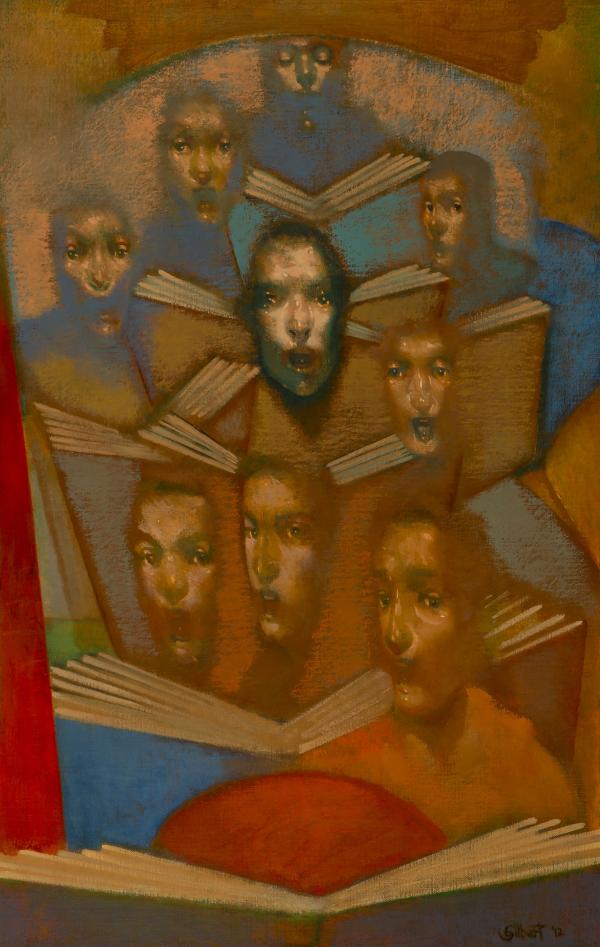Jewish Choral Art in America
From the curator
If we in the West tend to think of music as being either functional, entertainment, or art, we do so at our own peril. For what we ignore when we conceive of art music as “transcendental” or as a one-way communication from composer to listeners via performers, is that art music—like its functional and entertainment brethren—does not exist in a vacuum. It too has a context, provides entertainment, and serves functions. At the same time, we also disregard the transcendental potential of so-called functional and entertainment music.
In an effort to ameliorate this tendency, musicologist Christopher Small introduced the concept of “musicking,” which inverts the dominant paradigm outlined above and posits composers, performers, and listeners (i.e., musickers) as interconnected (and relatively equal) elements of a socio-musical ecosystem. In this paradigm, performance and community are at the center of an essentially and thoroughly socially significant event—one in which the musical work serves as the means rather than the end. As he put it: "Performance does not exist in order to present musical works, but rather, musical works exist in order to give performers something to perform.”
If this seems far-fetched, consider that—as Neil W. Levin points out in his introduction to this volume—the formation of Jewish choirs in the wake of European emancipation and the Haskala preceded the large body of secular Jewish choral music that now exists. Prior to having a repertoire of their “own,” the classically oriented Jewish (Hazomir) choruses performed mostly “non-Jewish” works (often by major European composers), translated into modern Hebrew or Yiddish to cater to their audiences. Eventually, choir conductors and others began composing works explicitly for these choruses, thus marking the beginning of a secular Jewish choral music tradition that continues to this day. Though secular in context, much of this repertoire is rooted in, and cannot be divorced from, sacred Jewish musical traditions—a point Levin further elucidates in his introduction.
Psalms and Canticles explores the American extension of this relatively recent, European-born tradition with music reflecting a broad range of contexts, approaches, and orientations: from Leonard Bernstein’s Chichester Psalms—a colossal work of choral and orchestral forces; to Philip Glass’s setting of Psalm 126—more subdued, but with its odd and shifting meters, machine-like orchestral parts, wordless choral sections, and narrated text (by Theodore Bikel) is Glass through-and-through; to Paul Schoenfield—who channels Monteverdi in a series of a cappella settings based on Psalm 86.
On the more musically adventurous side are choral settings by Hugo Weisgall (Four Choral Etudes), Lukas Foss (Lammdeni), and Joseph Achron (Danse de Salomé), along with those by Ursula Mamlok (Cantata based on the First Psalm) and George Rochberg (from Three Psalms). More straightforward but equally enjoyable are works by Judith Shatin (Hark My Love, And How My Brother Is Cain), Leon Stein (Songs of the Night) and Robert Strassburg (Psalm 117).
(Note that a number of these works are featured this volume’s numerous video offerings, which include a short documentary and several performance videos featuring the BBC singers, as well as composer interviews.)
As a body of work, Psalms and Canticles reflects the richness of secular Jewish culture, and at the same time, attests to a common grounding in Judaic liturgy and Jewish experience. But perhaps most importantly (and with the help of Small’s insight), it encourages us think about how the desire to build community and identity through music—musicking—has engendered a vast and varied repertoire that is often taken for granted.
—Jeff Janeczko








